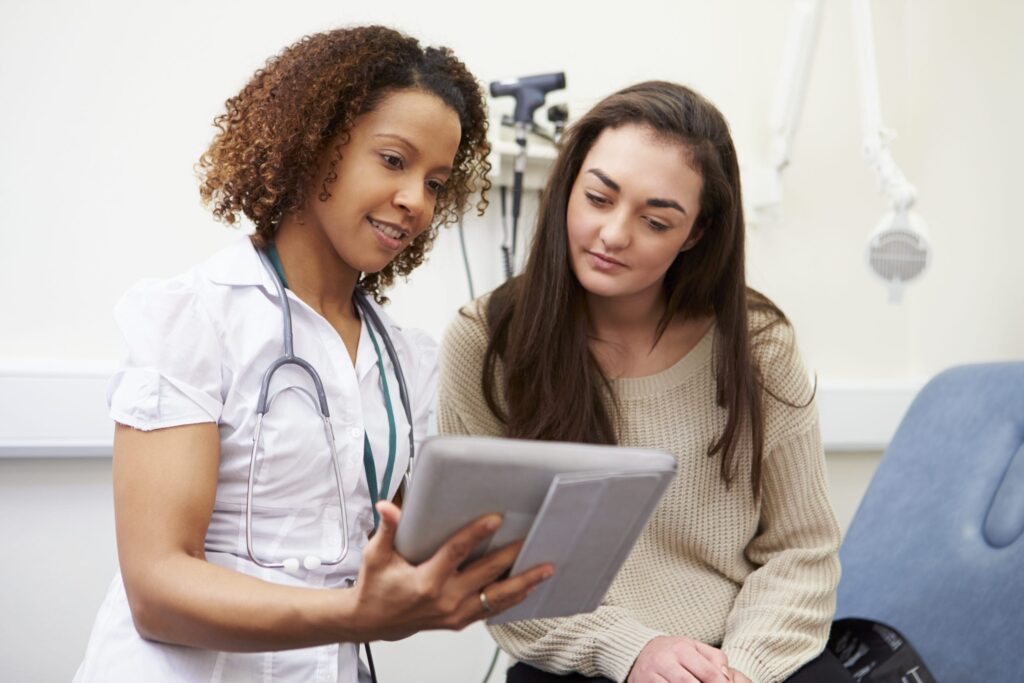If you have recently undergone an abortion, it’s essential to understand that post-abortion bleeding can play an integral part in the healing process. While it’s not uncommon to experience some bleeding following the procedure, it can sometimes persist for a more extended period, causing worry and anxiety. That’s why knowing what to expect and how to manage post-abortion bleeding is crucial. With that said, we have compiled some helpful tips to assist you in handling the situation effectively. It is essential to prioritize post-abortion care and familiarize yourself with the dos and don’ts when dealing with prolonged bleeding after abortion. Understanding the different options available to manage bleeding can go a long way in reducing anxiety and ensuring your overall recovery process is seamless and successful. Don’t hesitate to seek medical attention if you experience severe pain or discomfort.
What causes of post-abortion bleeding
Post-abortion bleeding can be caused by a variety of factors, including:
1. Placenta Previa or Accreta: These are conditions in which the placenta remains attached to the uterus after the abortion. This can lead to heavy bleeding and requires immediate medical attention.
2. Uterine Atony: This is a condition in which the uterus fails to contract properly after the abortion, causing heavy bleeding.
3. Retained Products of Conception: This occurs when some of the tissue from the pregnancy remains in the uterus, leading to continued bleeding.
4. Cervical or Vaginal Laceration: During the abortion procedure, the cervix or vagina may become injured, leading to bleeding.
5. Uterine Injury: In some cases, the uterus may be perforated during the abortion procedure, leading to heavy bleeding.
6. Coagulopathy: This is a condition in which the blood is unable to clot properly, leading to heavy bleeding.
It is important to remember that post-abortion bleeding can be a serious medical condition and should be monitored closely. If you experience heavy bleeding, severe pain, fever, or other symptoms, seek medical attention immediately. Your healthcare provider can help you identify the underlying cause of your bleeding and provide appropriate treatment.
When to Seek Medical Attention for Post-Abortion Bleeding

If you ever feel any uncommon or severe symptoms, it is imperative that you seek medical attention right away. Do not hesitate to contact your healthcare provider who will thoroughly assess your symptoms and decide if you need further medical attention. It is essential that you keep a record of your symptoms and discuss them with your healthcare provider during your follow-up visits. This way, you can monitor how your symptoms are progressing and make necessary adjustments to your treatment plan. Remember, it is always better to be safe than sorry, especially when it comes to your health. So, if you feel like something is not right with your body, do not wait and seek medical attention immediately. Your health is priority number one, so make sure you take care of it.
Tips for Managing Post-Abortion Bleeding
It is important to remember that it is normal to bleed for up to 6 weeks after an abortion, although some people may experience little to no bleeding during the first few days. However, if you notice bad smelling brown blood after abortion, excessive bleeding after abortion, or cramping after abortion, it may be a sign of post-abortion bleeding.
To manage post-abortion bleeding, one effective method is to give yourself a deep uterine massage. To do this, simply lie on your back and gently massage your abdomen using circular motions. This can help to relieve heavy bleeding by promoting blood flow.
It is also recommended that you reduce your activity level and avoid strenuous activities, as this can help to limit bleeding. Additionally, try to avoid drinking alcohol for at least 2 days, as alcohol can increase bleeding.
If you are experiencing pain, you can take over-the-counter NSAIDs approved by your doctor to relieve pain. However, it is important to note that recovery period after abortion can vary for each individual, and it is always best to consult with your medical provider before taking any medication.

According to medical providers, most people only need to abstain from alcohol for about 2 days after the bleeding starts. They also advise that the best way to slow down bleeding, especially if it’s being caused by increased activity, is to get adequate rest.
Lastly, if you notice any smelly discharge after abortion, or if the bleeding continues to be heavy or accompanied by severe cramping, it is important to seek medical attention as these may be signs of complications.
Tampons Vs Pads
Using sanitary pads instead of tampons is a prudent choice for menstrual hygiene, particularly when it comes to monitoring bleeding and preventing infections.
- Sanitary pads allow for greater visibility of your flow, making it easier to track any changes or irregularities that may occur throughout your cycle. This level of awareness can be crucial for understanding your body’s patterns and addressing any potential health concerns early on. Moreover, unlike tampons, which can pose a risk of Toxic Shock Syndrome (TSS) if left in too long, sanitary pads provide a safer alternative by minimizing the risk of internal irritation or infection. They are designed to sit externally, which not only promotes better airflow but also reduces the likelihood of bacteria build-up that can lead to unpleasant odors or discomfort. Additionally, using sanitary pads can be more comfortable for many people during their period, especially on lighter days when inserting a tampon might feel unnecessary or cumbersome. With various sizes and absorbencies available on the market—from ultra-thin options for everyday wear to more absorbent pads suitable for heavier flow days—there is a pad designed to meet every individual’s needs. In conclusion, opting for sanitary pads over tampons not only allows you greater control over your menstrual health but also significantly decreases the risk of infections and complications. Making this simple switch could lead you toward a more informed and healthier menstruation experience overall.
Share with friends!









